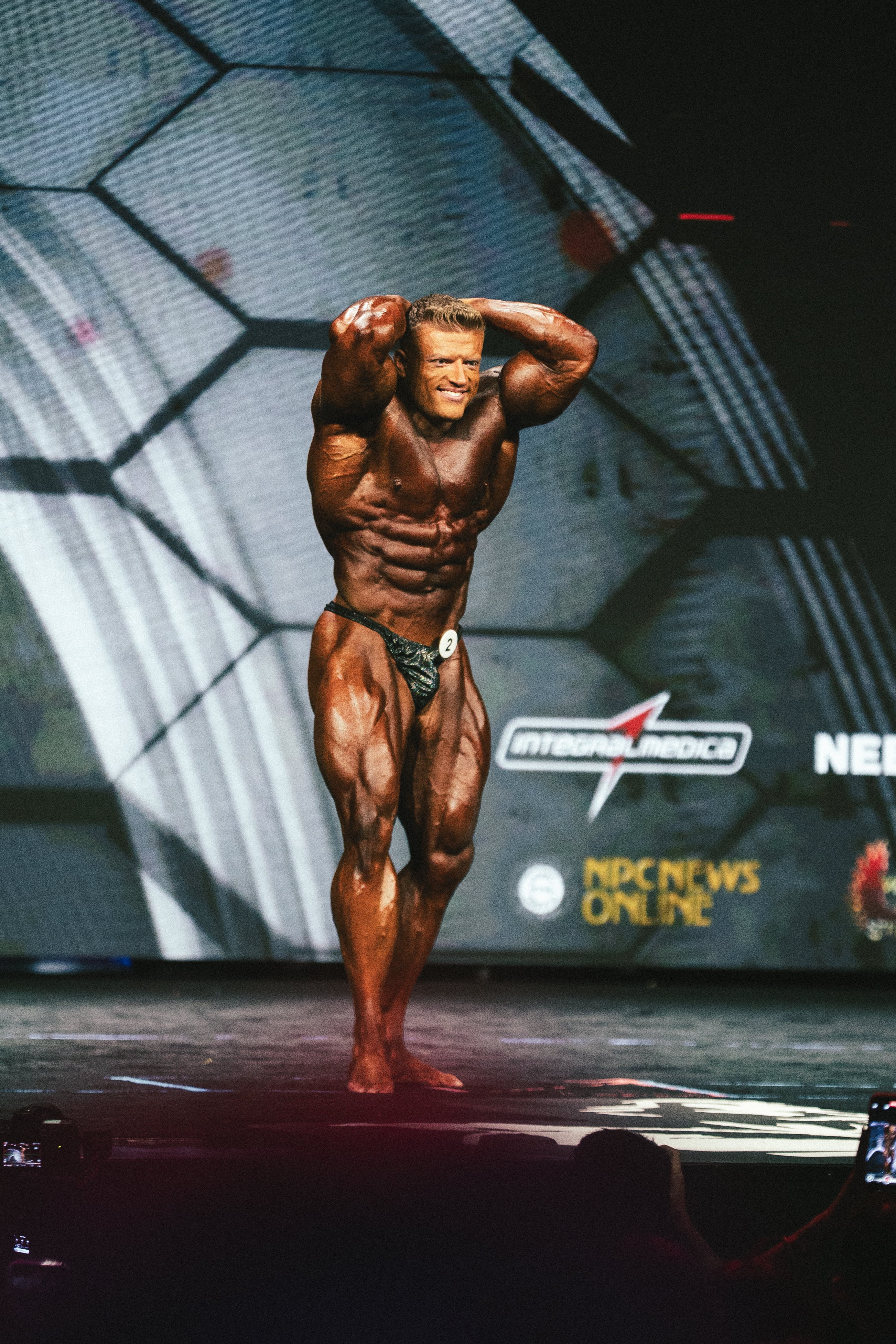Tags: Bodybuilding, Muscle building, Workout plan
Basics for Effective Muscle Building in Bodybuilding
Muscle growth refers to the enlargement of muscle fibers as a result of structural adaptations caused by physical stress, such as weight training or intensive strength training.
The time it takes for visible results of muscle growth to become apparent varies from individual to individual and depends on many factors. Initial progress can usually be seen after 6 to 12 weeks of training, while long-term and significant growth often requires years of consistent work—as demonstrated by bodybuilding professionals like Urs Kalecinski and Mike Sommerfeld.
Genetics is an important factor. Differences in muscle fiber composition, for example, lead to individual adaptability. Of course, training also plays a crucial role. A structured training plan for muscle building, ideally tailored to your personal goals, can significantly accelerate progress.
Nutrition is another key factor for success. Adequate protein intake of 1.6 to 2.2 grams of protein per kilogram of body weight daily is necessary to maximize protein synthesis. A muscle-building diet with a calorie surplus promotes muscle mass gain, while a deficit can, conversely, slow this process.
Equally important and often underestimated is recovery. Insufficient sleep and chronic stress impair hormonal adjustments and can therefore negatively impact muscle growth.
In addition, factors such as age and gender play a role in muscle growth: For example, younger people and men benefit from faster progress due to higher levels of testosterone and growth hormones.
A significant difference can be seen between natural and enhanced bodybuilders. Natural bodybuilding means that, due to the natural limitation of hormonal mechanisms, a muscle gain of 2 to 4 kilograms per year is possible – especially after the first few years of training. In contrast, steroids can significantly accelerate muscle growth.
However, nutrition, training, recovery, and even genetics play a crucial role here. They promote protein synthesis and recovery, making weight gains of 5 to 7 kilograms possible within a few months. However, these gains come with significant health risks, including hormonal imbalances, long-term organ damage, and many more.
Learn more about how and why muscle loss occurs – and what you can actively do about it.
Conclusion: Building muscle takes time, knowledge and structure
In summary, muscle growth is a long-term process influenced by training, nutrition, recovery, and genetic factors. While athletes who train naturally make moderate progress, steroid users achieve greater short-term results—but at the expense of physical and mental health.
Sources:
- Bouchard, C., et al. (1999). "Genetic determinants of adaptation to regular physical activity." *European Journal of Applied Physiology and Occupational Physiology.*
- Dattilo, M., et al. (2011). "Sleep and muscle recovery: Endocrinological and molecular basis for a new and promising hypothesis." *Medical hypotheses.*
- Fry, CS, et al. (2017). "Regulation of muscle protein synthesis in response to resistance exercise: The role of mTOR signaling." *Frontiers in Physiology.*
- Hoffman, J.R., & Ratamess, N.A. (2006). "Medical issues associated with anabolic steroid use: Are they exaggerated?" *Journal of Sports Science and Medicine.*
- Morton, R.W., et al. (2018). "A systematic review, meta-analysis and meta-regression of the effect of protein supplementation on resistance training-induced gains in muscle mass and strength." *British Journal of Sports Medicine.*
- Schoenfeld, B.J. (2010). "The mechanisms of muscle hypertrophy and their application to resistance training." *Journal of Strength and Conditioning Research.*
- Schoenfeld, B.J., et al. (2016). "Effects of different volume-equated resistance training loading strategies on muscular adaptations in well-trained men." *Journal of Strength and Conditioning Research.*
- Wernbom, M., et al. (2007). "The influence of frequency, intensity, volume and mode of strength training on whole muscle cross-sectional area in humans." *Sports Medicine.*


